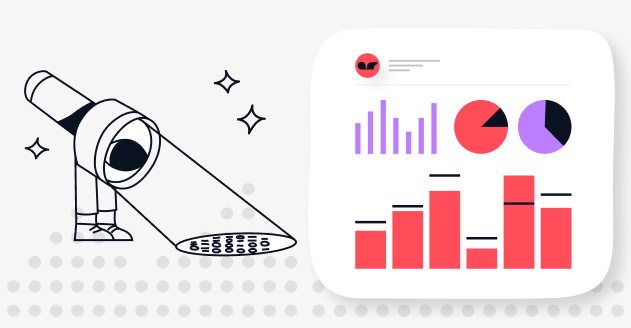Data Catalogs vs Data Lake
Type of data stored, accessibility, scalability, searchability, cost

Big data has taken center stage in business operations. The ways we store, manage, and access data have become critical decisions for companies. This article dives deep into differentiating two crucial concepts: Data Catalogs and Data Lakes. Let's dive straight into the article by first understanding the basics of a data catalog then a data lake.
What is a Data Catalog?
A data catalog is a vital tool in the modern data landscape, especially for organizations looking to democratize data access while ensuring proper governance and understanding. It helps data teams & business teams collaborate around data. Data catalogs help people find, understand & use data.
Here's what it offers:
- A detailed metadata management system, almost like an encyclopedia about your data.
- Data lineage shows you the family tree of your data history and source of your data.
- A user-friendly search functionality to find data without hassle that also strengthens data discovery.
The power of a Data Catalog lies in its ability to organize and make sense of data. But it's not a one-size-fits-all. For some businesses, a Data Catalog might seem excessive, especially if they don't have vast amounts of data to manage.
What is a Data Lake?
A Data Lake is a storage system (often based on distributed file systems like Hadoop's HDFS or cloud storage like Amazon S3) where raw data coming from various data sources is stored in its native format. This data can be structured, semi-structured, or unstructured in nature. Imagine a huge digital library without a catalog, where:
- Scalability is the priority, allowing it to grow as data accumulates.
- It can handle any data types from texts, images, and videos to complex databases.
- Different storage options are available, such as on-premises or cloud-based storage.
While Data Lakes sound great, they are not perfect for every situation. They're best for organizations that have a lot of raw data assets that need a home. However, without proper management, they can turn into 'data swamps' – full of messy and unorganized data.
Core Differences Between Data Catalog and Data Lake

Similarities Between Data Catalog and Data Lake

Real-world Examples
Data Lakes in Action
- Spotify: Utilizes Data Lakes to manage its vast repository of songs, user data, and playback details. By doing this, it ensures that its music recommendation algorithms function optimally, enhancing user experience.
- Netflix: Employs Data Lakes to handle enormous amounts of user data, from watch history to user preferences. This enables Netflix to improve its content recommendations and maintain seamless streaming, even during peak hours.
Data Catalogs Making a Difference
- IBM: Leverages Data Catalogs in its analytics solutions. These catalogs help in organizing a wide variety of data from different industries. Through well-managed metadata, IBM can offer more advanced analytics and data-driven insights to its clients including data scientists, business users, and more.
Integration Possibilities
- Complementary Roles: Data Lakes serve as massive repositories for raw data sets, while Data Catalogs help in making this data findable and usable. When integrated, the two systems offer a complete data management solution.
- Enhanced Governance: With a Data Catalog integrated into a Data Lake, data governance becomes easier. Metadata tagging and lineage features from the Data Catalog can make it simpler to manage and audit data within the Data Lake.
- Improved User Experience: Users can enjoy the vast storage capabilities of a Data Lake while benefiting from the easy search and retrieval functions of a Data Catalog, thereby enhancing the user experience.
- Efficient Analytics: Combining the raw data storage capability of Data Lakes with the organizational prowess of Data Catalogs can streamline the analytics process, offering quicker and more accurate insights.
- All-in-One Solutions: Several software providers are offering integrated solutions that combine the features of both Data Lake architecture and Data Catalogs, giving organizations the ability to efficiently manage and utilize their data.
The integration of Data Lakes and Data Catalogs brings out the strengths of both, creating a more powerful and effective data management system for use cases like business intelligence, machine learning etc.
Conclusion
Deciding between a Data Lake, a Data Catalog, or integrating both depends on your organization's unique requirements—be it the scale of data you're dealing with, the level of governance needed, or the specific analytics goals you aim to achieve. Each has its own merits and potential drawbacks, but when chosen wisely, they can be invaluable tools in your data management arsenal.
The digital world is indeed vast, but with the right strategies and tools, you can turn data from being just a raw asset into a wellspring of actionable insights. Remember, the ultimate goal is to make your data work for you, not the other way around.
You might also like
Get in Touch to Learn More



“[I like] The easy to use interface and the speed of finding the relevant assets that you're looking for in your database. I also really enjoy the score given to each table, [which] lets you prioritize the results of your queries by how often certain data is used.” - Michal P., Head of Data




.png)





.png)